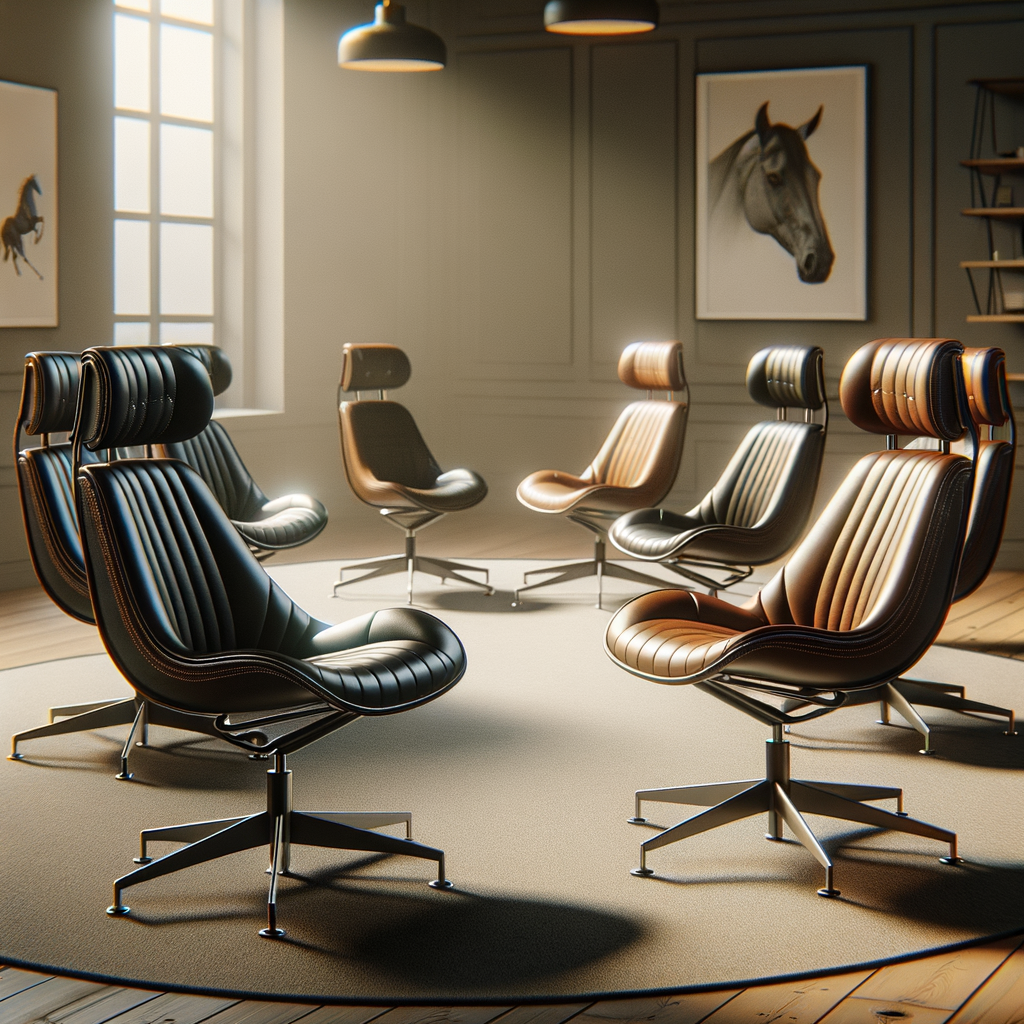Imagine a seat designed to mimic the shape of a horse saddle – that’s exactly what saddle seats are all about. Unlike conventional chairs that force you into a rigid 90-degree sitting position, saddle seats encourage a more open hip angle, which can alleviate pressure on your lower back and pelvis. Beyond mere comfort, saddle seats can improve circulation, reduce fatigue, and enhance overall productivity.
Understanding Ergonomics
Ergonomics isn’t just industry jargon; it’s crucial for maintaining musculoskeletal health, particularly for those who spend extended periods seated. Saddle seats are inherently ergonomic, promoting a neutral spine alignment and engaging core muscles to maintain balance. By providing support where it’s needed most, these seats help prevent common issues such as back pain, stiffness, and poor circulation.
Factors to Consider When Choosing a Saddle Seat
When in the market for a saddle seat, several factors warrant consideration to ensure you select the optimal option for your needs. Firstly, assess the adjustability options – a quality saddle seat should allow customization of height, tilt, and angle to suit individual body dimensions and preferences. Additionally, prioritize material and build quality for durability, and comfort features such as padding and ergonomic contours to enhance the sitting experience.
Different Types of Saddle Seats
Saddle seats come in various styles and designs, catering to different preferences and requirements. Traditional saddle seats resemble horse saddles and are typically mounted on a single base. Ergonomic saddle chairs offer additional features like backrests and armrests for added support, while saddle stools provide a compact option ideal for smaller workspaces.
Comparing Saddle Seats with Traditional Office Chairs
In terms of ergonomics and comfort, saddle seats hold a distinct advantage over traditional office chairs. By encouraging an active sitting posture, they help prevent slouching and promote movement throughout the day, mitigating the risk of musculoskeletal issues associated with prolonged sitting. In contrast, traditional chairs often lack the ergonomic features necessary for optimal comfort and support.
Tips for Testing and Evaluating Saddle Seats
Before making a purchase, it’s imperative to test and evaluate different saddle seats to ensure a proper fit and comfort level. Pay attention to ease of adjustability and support provided for your body, noting any pressure points or discomfort. Additionally, assess how well the seat conforms to your natural sitting posture for sustained comfort during extended use.
Cost-Effectiveness of Saddle Seats
While saddle seats may entail a higher initial investment compared to traditional office chairs, they offer long-term benefits that justify the expenditure. By prioritizing ergonomic seating, individuals invest in their health and well-being, potentially saving on future medical expenses associated with poor posture and back pain.
User Reviews and Recommendations
Gathering insights from user reviews and recommendations can provide valuable guidance when selecting a saddle seat. Consider testimonials that highlight the benefits of specific models and brands, paying attention to factors such as comfort, durability, and customer satisfaction.
Maintaining and Caring for Saddle Seats
To prolong the lifespan and maintain optimal comfort of a saddle seat, regular maintenance is essential. Routine cleaning and occasional lubrication of moving parts can help preserve functionality and ensure continued comfort throughout its use.
Addressing Common Concerns and Misconceptions
Despite the numerous benefits of saddle seats, individuals may harbor concerns or misconceptions regarding their use. Address common issues such as initial discomfort during the adjustment period, emphasizing that it is typically temporary and outweighed by the long-term benefits. Additionally, dispel misconceptions regarding the unconventional appearance of saddle seats, highlighting their practicality and ergonomic advantages.
Integrating Saddle Seats into Different Work Environments
Versatile and adaptable, saddle seats can seamlessly integrate into various work environments, including home offices, shared workspaces, and creative studios. Their ergonomic design and compact form make them suitable for individuals seeking comfort and support in diverse settings.
Promoting Health and Wellness
Beyond mere comfort, saddle seats contribute to overall health and wellness by reducing the risk of chronic conditions associated with prolonged sitting. By encouraging proper posture and movement, these seats support musculoskeletal health and enhance productivity and focus.
Sustainability and Environmental Impact
For environmentally conscious consumers, considering the sustainability and environmental impact of saddle seat materials is crucial. Opting for eco-friendly options and supporting brands with sustainable manufacturing practices can minimize environmental footprint.
Customization Options and Personalization
Personalization options allow individuals to tailor their saddle seat to suit their aesthetic preferences and functional needs. From choosing colors and finishes to adding accessories for enhanced functionality, customization options empower users to create a workspace that reflects their unique style while promoting comfort and productivity.
Conclusion
Selecting the best saddle seat for your home office is a decision that warrants careful consideration. By prioritizing factors such as adjustability, comfort, and durability, individuals can create a workspace conducive to health, wellness, and productivity. Whether opting for a traditional saddle seat or a more ergonomic design, investing in proper seating is an investment in overall well-being. So why wait? Upgrade your home office with a saddle seat today and experience the transformative benefits it can bring to your work environment.

